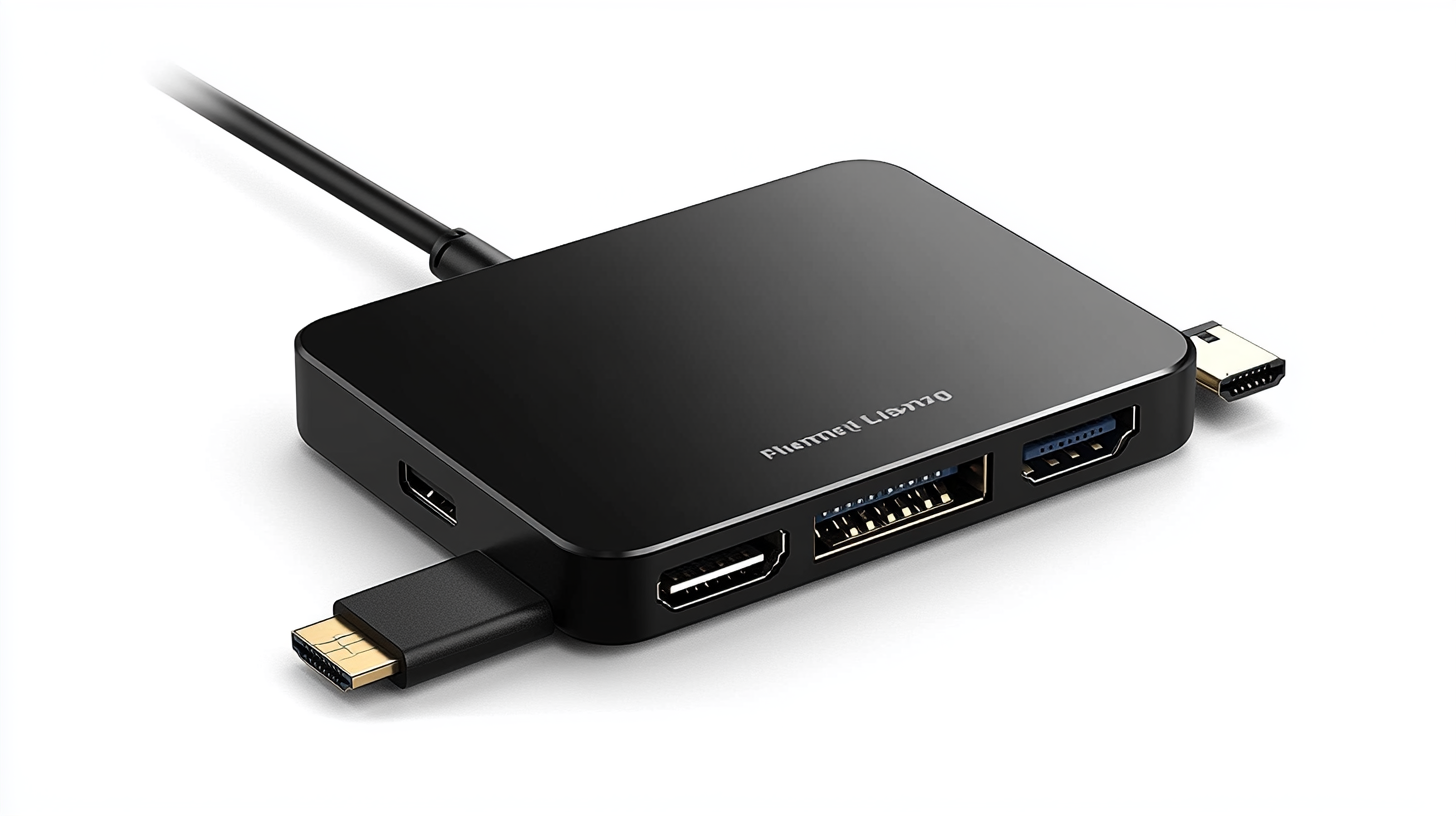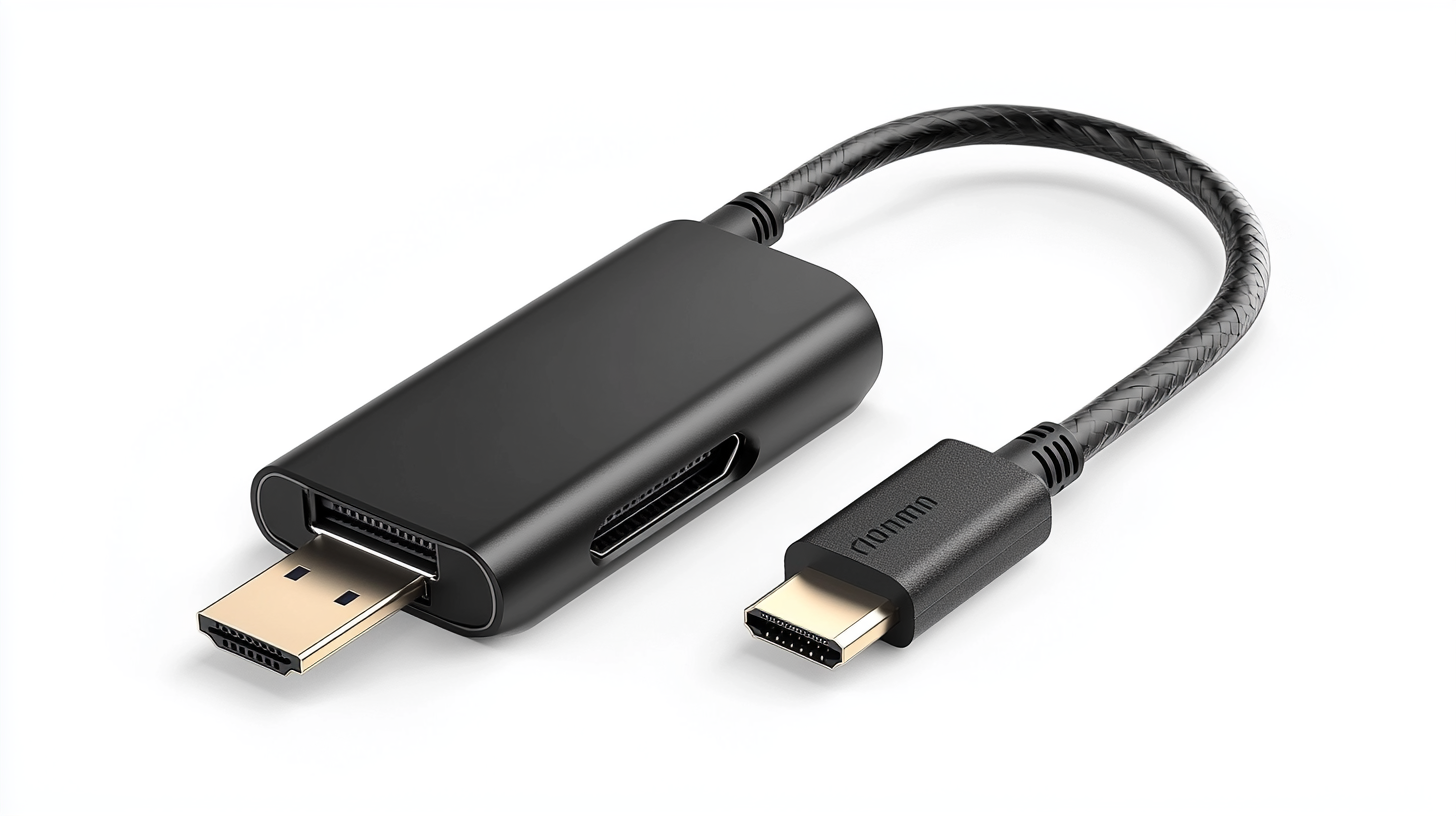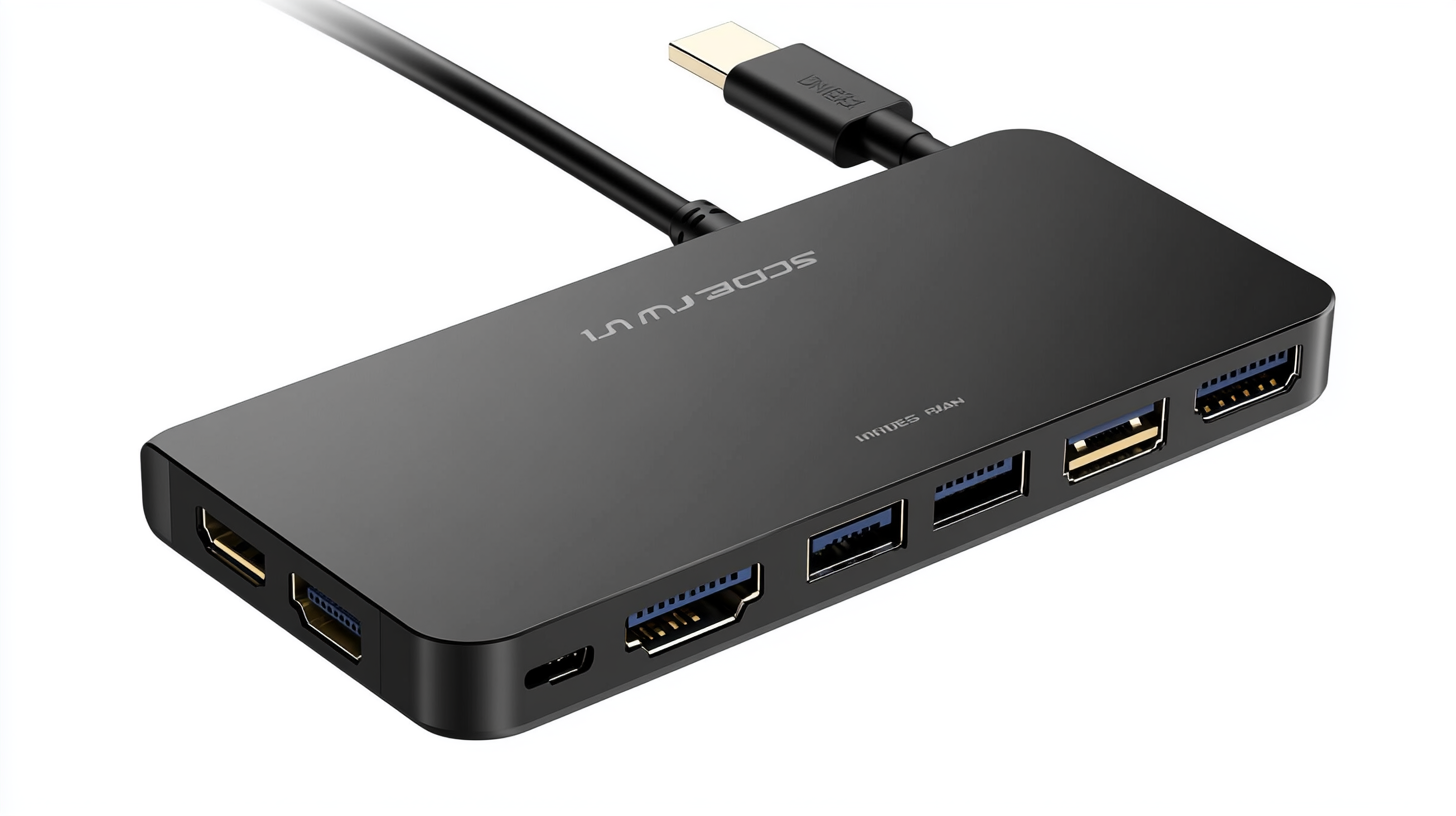
-
Home
-
Products
-
About Us
-
OEM&ODM
-
News
-
Contact Us
Inquiry
Form loading...

In today's rapidly evolving global marketplace, staying ahead of future trends in sourcing is crucial for businesses aiming to enhance their operational efficiency and competitiveness. With the rise of innovative technologies and changing consumer preferences, organizations are continuously adapting their sourcing strategies to leverage emerging opportunities. One such advancement is the Type C Hub 2 HDMI, a versatile tool that exemplifies the intersection of technology and global sourcing. This cutting-edge device not only streamlines connectivity in a variety of settings—be it in corporate environments or at home—but also highlights the importance of efficient resource management in an increasingly interconnected world. As we delve into the key trends shaping the future of global sourcing, we'll also explore how incorporating technology like the Type C Hub 2 HDMI can optimize your toolkit, ultimately helping you navigate this dynamic landscape with confidence.

In today's rapidly evolving business landscape, emerging global sourcing trends are significantly reshaping how companies operate. According to a report by Deloitte, 61% of executives cite global sourcing as a critical element in their organizations' success strategies. The shift towards more sustainable practices is evident, with 90% of companies now prioritizing ethical sourcing, influenced by consumer demand for transparency and environmental responsibility. This trend is not just a matter of corporate social responsibility; it has become a pivotal factor in brand loyalty and market competitiveness.
Moreover, the integration of technology in global sourcing is transforming procurement processes. A recent study by McKinsey & Company indicates that firms leveraging advanced analytics and automation in their sourcing strategies are witnessing a 20-30% reduction in procurement costs. The rise of digital marketplaces and e-sourcing platforms also enables businesses to streamline supply chains and enhance supplier relationships, providing a robust framework for navigating market fluctuations. As companies adapt to these trends, the ability to pivot quickly and embrace innovative sourcing solutions will be crucial for maintaining a competitive edge in the marketplace.

In today’s rapidly evolving technological landscape, integrating Type C hubs into global sourcing strategies offers numerous benefits that can streamline operations and enhance efficiency. As businesses increasingly adopt USB Type-C technology, hubs equipped with multiple HDMI ports provide seamless connectivity for various devices, catering to the changing needs of consumers and enterprises alike. This versatility allows companies to stay adaptable in a competitive market, making Type C hubs an essential component of modern sourcing strategies.
One of the key advantages of incorporating Type C hubs is their ability to reduce clutter and improve workspace organization. With a single hub accommodating multiple devices, companies can minimize the number of cables and adaptors required, leading to a cleaner, more efficient work environment. Additionally, these hubs are often designed to support fast data transfer and charging capabilities, enabling remote workers and teams on the go to stay connected and productive.
Furthermore, the global sourcing of Type C hubs can lead to significant cost savings for businesses. By sourcing hubs from regions with competitive pricing and high-quality manufacturing, companies can enhance their product offerings while keeping expenses in check. This financial incentive, combined with the technological benefits, makes integrating Type C hubs into sourcing strategies not just a trend, but a strategic move towards long-term success in a digitally driven world.
As technology continues to evolve, understanding the compatibility of Type C hubs with HDMI devices becomes increasingly important for consumers and businesses alike. Type C hubs are versatile tools that allow users to expand their device connectivity options, enabling them to connect multiple peripherals. When it comes to HDMI devices, compatibility largely depends on the capabilities of both the hub and the HDMI device in use.
A significant factor in ensuring seamless connectivity is the support for various video resolutions and refresh rates. Most Type C hubs are designed to support 4K video output, making them ideal for high-definition displays. However, not all hubs perform equally; some may only support lower resolutions. Therefore, it is essential to check the specifications of your Type C hub to confirm its HDMI output capabilities, especially if you aim to connect it to an ultra-high-definition monitor or TV.
Additionally, users should be aware of the potential issues that may arise when using different brands or models of Type C hubs and HDMI devices. While USB-C has become a standard interface, variations in the protocol can lead to compatibility problems. To mitigate these concerns, it’s advisable to invest in a high-quality Type C hub that explicitly lists compatibility with your specific HDMI devices, ensuring a smooth and efficient experience.

As Type C technology continues to advance, its implications for global sourcing and procurement strategies are becoming increasingly significant. According to a report by Allied Market Research, the global USB Type-C market is projected to reach $5.25 billion by 2027, growing at a compound annual growth rate (CAGR) of 25.6% from 2020 to 2027. This rapid growth indicates a shift in consumer preferences towards devices that support Type C connections, impacting sourcing strategies as demand for compatible accessories, such as Type C hubs, increases.
Innovations in Type C technology, particularly in the realm of connectivity and power delivery, are transforming how businesses approach sourcing. For instance, the advent of Type C hubs featuring dual HDMI outputs allows for enhanced multitasking capabilities, catering to a growing need for efficient workspace setups. This trend has been noted by Future Market Insights, which suggests that the integration of multiple ports in Type C hubs not only enhances functionality but also streamlines supply chains by reducing the number of individual components businesses need to source.
Additionally, as manufacturers move towards sustainability, Type C technology's potential for universal compatibility reduces electronic waste. Gartner reports that 70% of organizations are prioritizing sustainability in their sourcing processes, and the adoption of Type C devices aligns with these goals by minimizing the variety of cables and connectors needed. As a result, companies are increasingly inclined to source products that incorporate Type C innovations, ensuring they meet both current and future market demands.
This chart demonstrates the projected sales of Type C hubs over four quarters. As technology evolves, the demand for Type C hubs is expected to rise due to increasing compatibility with various devices. Innovations in Type C technology will play a crucial role in shaping the sourcing landscape.
When selecting the right Type C hub to meet your specific needs, it’s essential to consider several key factors. According to the research conducted by Grand View Research, the global USB hub market is expected to reach USD 1.6 billion by 2025, driven by the increasing adoption of Type C connectors across various devices. This trend highlights the growing necessity for reliable hubs that not only enhance connectivity but also ensure compatibility with a wide range of peripherals.
One best practice in choosing a Type C hub is to assess the number and types of ports provided. A versatile hub typically includes HDMI, USB-A, USB-C, and Ethernet ports, catering to diverse user requirements. A report from Technavio suggests that hubs with multiple ports have seen a 28% increase in demand over the past year, as consumers look for solutions that elevate their productivity. Furthermore, attention should be paid to data transfer speeds and charging capabilities; selecting a hub that supports USB 3.1 or higher can significantly boost performance, enabling fast charging and efficient data transfers.
Lastly, consider compatibility with your devices. Many laptops and tablets now feature Type C ports, but not all hubs are universally compatible. Research by Market Research Future indicates that over 50% of users experience issues with connectivity due to unverified hubs. Always opt for a hub from a reputable brand with positive reviews and confirmed compatibility with your hardware to avoid these pitfalls.
| Feature | Description | Best Practice |
|---|---|---|
| Port Types | Understanding the different ports available on Type C hubs. | Choose a hub with HDMI, USB-A, and SD card reader for versatility. |
| Compatibility | Ensure the hub is compatible with your devices. | Research compatibility before purchase with brands such as Apple and Samsung. |
| Power Delivery | Check if the hub supports power delivery for charging. | Opt for hubs that provide at least 60W power delivery. |
| Data Transfer Speed | Look for USB 3.0 or higher for faster data transfer. | Choose hubs supporting USB 3.1 for up to 10 Gbps speeds. |
| Size and Portability | Consider the size of the hub for travel convenience. | Select compact and lightweight hubs for easy mobility. |